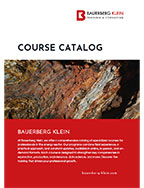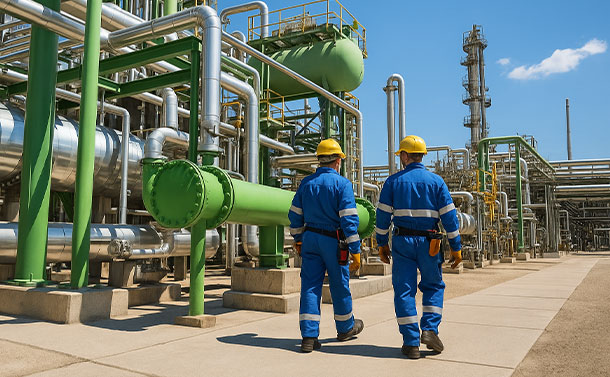1. Experience:
Experienced Consultant with a demonstrated history of working in the oil & gas industry, skilled in hands-on training with emphasis in core-to-log data integration, permeability modeling, rock typing, flow units and SHM.
Acquired with Schlumberger 40+ years of industry experience; Software: ELAN and PVP on Unix platorms Retired in 2005 with the grade of “Principal Petrophysicist”; fluent in Spanish, Portuguese and English.
As of 2000 (before retirement) and till today, participated in conducting regular and “Hands-On” team- training/coaching projects, mainly for NExT (Schlumberger company), building static characterization models on client’s actual data, in clastics and carbonates, integrating Routine and Special Core Analysis and capillarity information to describe the pore geometry and to develop basic Saturation Height Models, validating logs computed Water Saturation values, or to forecast the initial Water Saturation independent of Resistivity; Software: IP-3.4 and (currently) Excel tools.
Experience gained in Angola, Argentina, Bolivia, Brazil, Colombia, México, Saudi Arabia, United States and Venezuela; and by participating in static characterization training/coaching projects for Ecopetrol, PDVSA, PEMEX, Saudi Arabia, Sonangol and Chad Ministry of Petroleum and Energy.
2.Work History
As of May 2005, retired from Schlumberger-Mexico. Fully devoted to training and/or coaching, mainly for NExT. 2003-2005: Training Manager Schlumberger DCS, Villahermosa, Mexico; Supported NExT worldwide.
2002-2003: CDGL Manager, Schlumberger, Villahermosa, Mexico (“Centro Dedicado a la Generación de Localizaciones“).
1998-2001: Sr. Log Analyst Schlumberger GeoQuest, New Orleans, LA, USA; Clients in house engineer for Reservoir Description processing and interpretation..
1995-1997: Consultant “Viro Consultoria Ltda”, Rio de Janeiro, Brazil; Open-Hole Log Interpretation Consulting Services in Brazil, Mexico, Venezuela and Argentina.
1991-1994: Center Manager GeoQuest Rio de Janeiro, Brazil; Computing Center Manager. 1986-1990: Center Manager Schlumberger Mexico City, Mexico; Computing Center Manager.
1984-1985: WEC – Brazil; WEC (Well Evaluation Conference) Coordinator for the edition of the Brazil-WEC book in Paris, involving Specialists and Geoscientists from Schlumberger and Petrobrás, with all traditional and new logging/interpretation techniques, including a three days international congress.
1981-1983: Log Analyst, located in Buenos Aires, Argentina and in Rio de Janeiro, Brazil, and South America ID Log Analyst (Interpretation Development), located in Caracas, Venezuela.
1978-1980: Technical Manager. Schlumberger Rio de Janeiro, Brazil. 1971-1977: Field & Lab Engineer Schlumberger Argentina, Bolivia, Chile.
3.Education
Dec-1970 Electronic Engineer Degree – Facultad de Ingeniería – UNBA (Universidad Nacional de Buenos Aires), Argentina. This degree is equivalent to a US BSc, as per Education International, Inc.
4.Honors – Awards
Schlumberger “DCS Excellence in Action Awards – 2003″ for contributing to the Customized Learning Plan for Subsurface PEMEX Professionals by NExT” project, completed by Q2, 2003.
“Performed by Schlumberger” 2002 award, for contribution in the team developing the oil field and porosity characterization Gaucho project for Pemex.
5.Professional Affiliations – Miscellaneous
SPWLA: member – Argentinian and Spanish passports – Permanent resident in USA.
6.Publications
Paper: “Challenges of Determining and Comparing Reservoir Storage and Flow Properties Using Deterministic Petrophysical Rock Types via Multiple Pore Throat Radius Indicators”, 2017 SPWLA 58th Annual Logging Symposium, Oklahoma, OK, USA, June 17-21, 2017.
Paper: “Challenges of Determining Petrophysical Reservoir Characterizations In Complex Low Porosity Fractured Carbonates – Integrating Pore Geometry, Deterministic Petrophysical Rock Types and Saturation Height Models Yields Positive Results – PEMEX Case Study Offshore Mexico”, 2015 SPWLA 56th Annual Symposium, Long Beach, CA, USA, July 18-22, 2015.
Paper: “Winland Pore Throat Prediction Method – A Proper Retrospect: New Examples From Carbonates and Complex Systems”, 2014 SPWLA 55th Annual Logging Symposium, Abu Dhabi, UAE, May 18-22, 2014.
Paper: “Identifying Value Added Opportunities By Integrating Well Log Interpretation, Petrophysical Rock Types And Flow Units; Introducing A New Multi-Component Stratigraphic Modified Lorenz Method”, 2012 SPWLA 53rd Annual Logging Symposium Cartagena, Colombia, June 16-20, 2012.
Paper: “Técnica de Cuatro Líneas para predecir resultados de interpretación de registros por computadora“, 2006 5° Congreso Nacional de Registros Geofísicos de Pozo, in parallel sessions to 47th SPWLA Annual Logging Symposium, Veracruz, Mexico, June 04-06, 2006.
Paper: “Three Lines Technique To Forecast The Computer Log Interpretation Results”, 2005 SPWLA-Argentina Congress, Mar del Plata, Argentina, November 15-19, 2005.
Paper: “The NExT/PEMEX Petrophysical Reservoir Characterization Program: Effective Blending of Training, Projects, and Mentoring”, EAGE congress, Paris, Junio’2004.
Paper: “Solución práctica para ‘m’ variable en carbonatos con registros convencionales“, 2002 IMP Annual Technical Congress, Reynosa, Tamaulipas, México, October 9-11, 2002.
Poster: “A Saturation Model for Complex Carbonates in Mexico”, 2002 annual SPWLA congress, Oiso, Japan, Mayo 2002.
Paper: “Integrating Permeabilities from NMR, Formation Tester, Well Test and Core Data”, 2001 SPE Annual Technical Conference and Exhibition, New Orleans, October 2001.
Paper: “So What is the Reservoir Permeability?”; 2000 SPE Annual Technical Conference and Exhibition, Dallas, Texas, 1-4 October 2000.
Paper: “Estudio del Exponente ‘m’ en la Predicción del Contenido de Fluidos“, Published in: IV Jornadas Técnicas AIPM – Asociación de Ingenieros Petroleros de México. November 1989.
Paper: “Detectción de Fracturas Abiertas con Análisis de Atributos Sónicos“, Published in: Congreso Anual – Asociación de Ingenieros Petroleros de México, November 1988.
Book: Brasil WEC (Well Evaluation Conference); Published in: Congresso Internacional de Avaliação de Formações – Rio de Janeiro November 1985.











